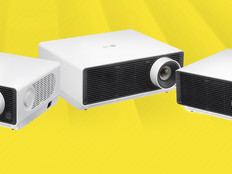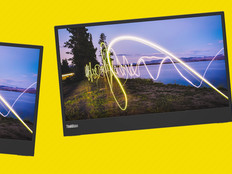Product Review: IBM BladeCenter H (8852) Is the Workhorse of the Data Center
While management and provisioning of virtual servers has radically improved over the past few years, maintaining the underlying hardware can still be a mixed bag. A typical server rack might contain as many as 42 servers, each of which must be managed separately.
The IBM BladeCenter H (8852) server chassis addresses this issue by housing up to 14 server blades, all of which can be managed at the hardware level through a single interface. Available blades range from a low-power, dual-CPU blade to one that supports two of the latest Xeon 12-core/24-thread CPUs and up to 1.25 terabytes of memory.
Thus, a single BladeCenter can provide hundreds of cores in a fully redundant system with enormous flexibility. Blades can be added or removed without powering down the BladeCenter, enabling a very high degree of control over configurations.
System Requirements
FORM FACTOR: 9U, rack-mounted
SERVER BAYS: 14
SIZE: 15.8x19x28 inches
WEIGHT: 90 pounds
CONNECTIVITY: Ethernet, Fibre Channel, Fibre Channel over Ethernet, InfiniBand, iSCSI and SAS
PORTS: 1 VGA; 1 RJ-45; 4 USB; 1 Gigabit Ethernet per management module, up to two modules
CDW•G Price
Starting at $5,062.99
IT departments are often called upon to roll out additional systems quickly and in standardized configurations. Using the IBM blades makes this very straightforward because the same blades can be used in any of the BladeCenter series models. Because older BladeCenter systems support the same power bus architecture, organizations can retain equipment longer. New blades will work with the existing chassis, and vice versa. This makes it easy to migrate loads from a basic blade to a higher-capacity blade.
The BladeCenter H (8852) requires a fairly significant starting point — a minimum of two 2,900-watt power supplies, as well as 220-volt, 30-amp power. The minimum weight with nothing installed is 90 pounds, and a fully loaded unit can reach 350 pounds.
BladeCenter Chassis Speeds Server Deployment
IT administrators often need to bring a new server online in a hurry. This can be a fairly complex task from a mechanical and connectivity standpoint. First, they need to add rack-mount rails, install the server in a rack, connect power cords, a few Ethernet cables and perhaps one more 10 Gigabit Ethernet or Fibre Channel cable. Next, they need to add keyboard, mouse and monitor connections, ensure that the two power cables are attached to different uninterruptable power supply systems, document which ports the server is using and ensure that there are two paths to storage and other needed servers. Only then do they finally boot the server and install the OS.
In contrast, with the IBM BladeCenter H, an administrator simply slides a new blade into the chassis and the rest is done automatically. The chassis can house up to 14 blades, which can really speed time to deployment.
Simplifying the management of servers also extends beyond initial configuration — instead of separate management interfaces for each server, there is a single interface for all the blades in the server.









